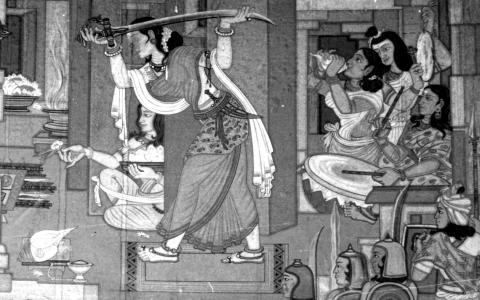
There are many references to show that women too were endowed with the spirit of kshaatra. For instance, in the Ramayana, we have the Kaikeyi episode. When Dasharatha took part in the great war between devas and asuras, Kaikeyi accompanied him. It is during that war she obtained those two boons from Dasharatha. In the Mahabharata, when Arjuna kidnaps Subhadra, a huge army of yadus attacks him. When he single-handedly combats the army, it is...

In the Vedas, alternative words for kshatriya are ‘गोप,’ ‘पशुप,’ ‘शर्धा,’ ‘व्रात,’ etc. The word ‘गो’ has ten meanings of which one of them is ‘earth.’ Other meanings include ‘wealth,’ ‘knowledge,’ etc. It also has the meaning of one who nurtures all these. In several places, Indra has been called ‘गोपति.’ The word ‘गोप्ता’ comes from the root word ‘गुप्.’ When words like ‘गोप’ and ‘गोप्ता’ are used in the sense of nourishers and kshatriyas, it...
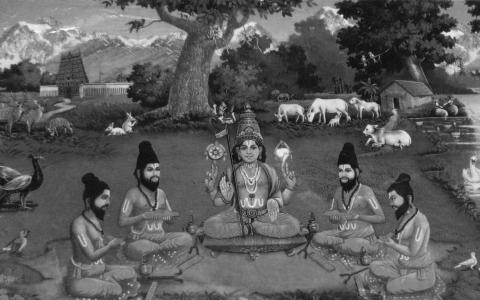
In our tradition, of the lineage of seers, the family that stands out is the Bhrguvamsha (or the Bhargavavamsha). Bhargava was one of the leaders of our country’s rise in material prosperity; he even tried to reach out to other-worldly wealth. Chyavana, one of the founders of Ayurveda; the seer-poet-artiste Shukracharya, who was a master of the Arthashastra and skilled in martial science; the seer Dadhichi who sacrificed his own body for the...

Awareness of Kshaatra in Kalidasa
Arguably the greatest of poets, Kalidasa, shows clearly in the Raghuvamsha how a kingdom should nurture kshaatra and how it should shine brightly if the kingdom has to prosper. By comparison and contrast, Kalidasa shows us how these values should be. Having wages and won wars in all four directions, having beaten the drums of victory all through, hailed as 'राजा प्रकृतिरञ्जनात्' (RV 4.12), such a saga belonged...
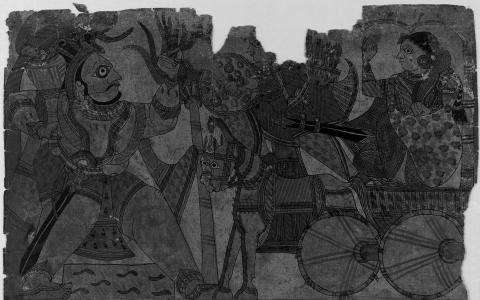
The Mahabharata was also known as Jaya (victory). By using the word ‘जय,’ Vedavyasa speaks of kshaatra and valor. There, both dharma and adharma are permanent, pre-eminent. When Vyasa calls Duryodhana as “दुर्योधनो मन्युमयो महाद्रुमः” and Yudhishthira as “युधिष्ठिरो धर्ममयो महाद्रुमः” (MB 1.1.65-66), the implied meaning is ‘a kshatriya should be established in dharma and should gently nurture the world like a great tree.’
According to the...
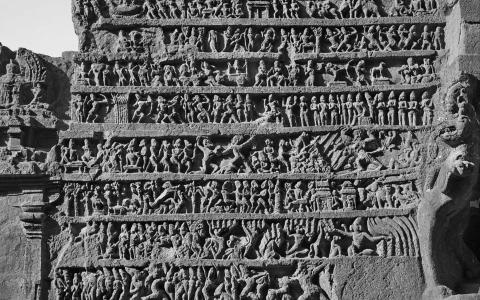
When describing Rama, Valmiki says, “कुलोचितमिति क्षात्रं धर्मं स्वं बहुमन्यते” in the beginning of the Ayodhya Kanda (1.16). Rama opined that kshaatra was the most appropriate path for his clan and took great pride in his valor. Rama knew elephant-riding, horse-riding, and was well-versed in all martial arts and techniques. If he went for war, he always returned victorious. Valmiki describes this in about 24 verses. In the beginning of the...

The maxims that can be gleaned from the Ramayana and Mahabharata are predominantly destruction of the wicked and protection of the righteous. Investigating into what is the predominant rasa of the Itihasas, the great aesthetician and scholar Anandavardhana says that the karuna rasa dominates in the Ramayana while the dominant rasa in the Mahabharata is shanta rasa. To this, we may add another rasa, that of ‘dharmavira’ – it would not be...
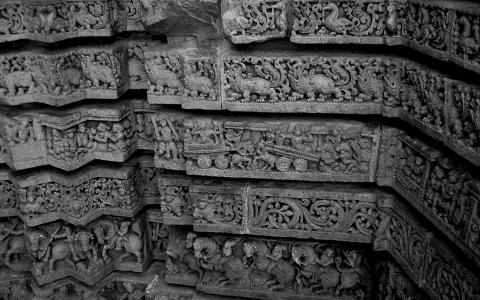
In both the Vedas and the Puranas we can see a lineage of seers and kings. Again and again we see a reference to the panchajana in the Vedas; it is a reference to the five tribes (or clans) – यदु, द्रुह्यु, तुर्वष, पुरु, and आनु. The group that primarily ruled our country are the Purus. The Yadus and the Turvashas were under them. The Aanus and Druhyus went to various parts and settled there, creating colonies. In summary, we can say that these...

In the dharmashastras, there are sections exclusively dedicated to raja-dharma that are both specific and elaborate. In the smrtis of Manu, Yajnavalkya, Narada and others, as well as the dharma-sutras of Apastamba, Bodhayana, Gautama and others, there are thousands of pages dedicated to raja-dharma. All those deal with how governance should be in a manner that is transparent and is in the best interests of the people, which are aligned to the...
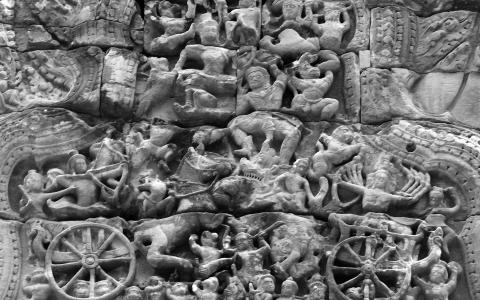
In the राजनीति (politics) and युद्धनीति (warfare) sections of the Atharva Veda, there is a prayer –
“O deities! Ensure that we don’t have any enemies at all. Inspire us to greatness in kshaatra and in prosperity.”
From this we understand how courage was regarded and taught in Vedic times. While performing the पट्टाभिषेक for the king, the purohita says,
“अयं देवानामसुरोऽभिराजति” – “You have the blessings of Indra, the greatest of the devas...
